Royan
|
Royan |
|
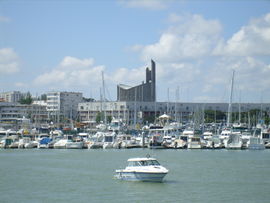 |
|
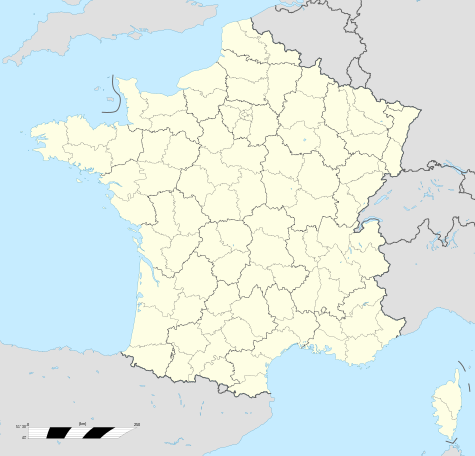 Royan
|
|
|
Location within Poitou-Charentes region
 Royan
|
|
| Administration | |
|---|---|
| Country | France |
| Region | Poitou-Charentes |
| Department | Charente-Maritime |
| Arrondissement | Rochefort |
| Intercommunality | Pays Royannais |
| Mayor | Didier Quentin (2008–2014) |
| Statistics | |
| Elevation | 0–35 m (0–115 ft) (avg. 20 m/66 ft) |
| Land area1 | 19.30 km2 (7.45 sq mi) |
| Population2 | 18,100 (2005) |
| - Density | 938 /km2 (2,430 /sq mi) |
| INSEE/Postal code | 17306/ 17200 |
| 1 French Land Register data, which excludes lakes, ponds, glaciers > 1 km² (0.386 sq mi or 247 acres) and river estuaries. | |
| 2 Population sans doubles comptes: residents of multiple communes (e.g., students and military personnel) only counted once. | |
Royan (Saintongeais: Roeyan) is a commune in the Charente-Maritime département, in south- western France. Inhabitants are called royannais and royannaises in French.
A seaside resort, Royan is a city of 18,100 inhabitants in the heart of an urban area estimated at 38,638 inhabitants, which makes it the fourth largest conurbation in the département after La Rochelle, Rochefort and Saintes. Capital of the « Côte de beauté », the city is located in the mouth of the Gironde Estuary, the largest estuary in Europe. Royan has five sandy beaches, a marina and a fishing port.
Famous from the nineteenth century for its « Bains de mer » (sea swimming), this very rich resort welcomed numerous artists during the 'roaring twenties'. Ravaged by terrible bombardments in 1945, the city was declared a research laboratory on town planning and since then has an architectural heritage dating from the 1950s (modernistic architecture). The city's post-war revival allows it today to welcome up to 90,000 inhabitants at the height of the season.
Contents |
Geography
Royan is a seaside resort situated in the southwest of the department of Charente-Maritime, in the former province of Saintonge. It occupies a site on the mouth of the Gironde Estuary, on the right, near the Atlantic coast. On the coast limestone cliffs and beaches, locally called conches, alternate. There are five of these, varying in size from the smallest, measuring only some hundreds of metres (conche of the pigeonnier ) to the largest ( the grande conche ), which spreads across about 2600 metres between the marina and the cliffs of Vallière in the nearby commune of Saint-Georges-de-Didonne. All are covered with extremely fine sand (of the order of 180 µm). Their formation seems to have occurred approximately 8000 years ago.
Three islands are nearby: Île de Ré, Île d'Oléron and Île-d'Aix.
Geology
The city of Royan is built on a calcareous plateau of rocks dating from the Cretaceous Period (approximately 150 million years), limited to the North by the swamps of Pousseau and on the West by the swamps of Pontaillac. The formation of the estuary, the cliffs and the conches occurred there is approximately 65 million years as the birth of the Alps and Pyrenees creased the coats of limestone.
Transport
Road
Royan is situated approximately 65 kilometres from the départemental prefecture, La Rochelle (via the départemental road 733 and national road 137), 98 kilometres from Bordeaux (by départemental road 730 and freeway A10) and 507 kilometres from Paris. The RN150 allows a journey time of a little less than half an hour from Royan to the city of Saintes, the historic capital of Saintonge and an important city of art and history.
Train
Royan SNCF railway-station is the terminus of a line connecting the city to Saintes, Angoulême, and Niort ( TGV for Bordeaux and Paris).
Airports
The conurbation of Royan does not possess its own airport; the city is situated in around thirty kilometres from Rochefort-Saint-Agnant Airport, allowing flights to several European destinations (notably the British Islands ), and approximately 70 kilometres from La Rochelle - île de Ré Airport. A hundred kilometres in the South, Bordeaux-Mérignac Airport allows connections from the region to numerous cities around the world.
Climate
The climate is oceanic : the pluviometry is relatively moderate in autumn and in winter and the winters are sweet. The summer remains moderate thanks to the marine breeze. Two winds coming from the ocean, the noroît and the suroît, blow on the coast of the department. Insolation is very important: with 2250 hours a year, it is comparable to the french riviera.
Charente-Maritime is the French département which was most hard touched by the hurricane Martin, of December 27, 1999. The national records of registered winds were reached with 198 km/h on the island of Oléron and 194 km/h in Royan. Buildings, woods and harbour facilities underwent heavy damage.
| Month | Jan | Feb | Mar | Apr | May | Jun | Jul | Aug | Sep | Oct | Nov | Dec | Year |
| Avg low (°C) | 3.4 | 4.0 | 5.4 | 7.4 | 10.7 | 13.7 | 15.8 | 15.7 | 13.7 | 10.5 | 6.3 | 3.9 | 9.2 |
| Avg high (°C) | 8.5 | 9.9 | 12.1 | 14.7 | 17.9 | 21.3 | 23.8 | 23.5 | 21.8 | 18.0 | 12.6 | 9.2 | 16.1 |
| Average (°C) | 5.9 | 6.9 | 8.7 | 11.1 | 14.3 | 17.5 | 19.8 | 19.6 | 17.8 | 14.2 | 9.4 | 6.6 | 12.7 |
| Insolation (h) | 84 | 111 | 174 | 212 | 239 | 272 | 305 | 277 | 218 | 167 | 107 | 85 | 2250 |
| Precipitation (mm) | 82.5 | 66.1 | 57.0 | 52.7 | 61.1 | 42.9 | 35.1 | 46.4 | 56.5 | 81.6 | 91.8 | 81.8 | 755.3 |
History
Prehistory and antiquity
The site of Royan was occupied from prehistory: cut flints brought to light by archeological excavations give evidence of this. The Celtic people of Santones began to emphasize the peninsula of Arvert. Romans developed the cultivation of vineyards, the breeding of oysters and the saltern technique. Tibulle celebrates the coast after the victory of Messala, and Ausone built a residence there. In 418, the Visigoths arrived at Saintess. To protect itself, Royan surrounded itself with walls in 419, the date on which this city is mentioned for the first time in an old man cartulaire. Grégoire of Tours mentions a usurpation of the church of Royan by the Arian Visigoths. In summer 844, the Vikings came up the Gironde, plundering everything on their passage.
Middle ages
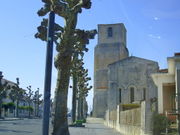
At the beginning of the XIth century, a precarious peace returned, the peninsula was slowly reborn at the instigation of small seigneuries and abbeys. Between 1050 and 1075, the prieuré of Saint-Vivien de Saintes built Saint Pierre prieuré on the plateau Saint-Pierre, two kilometres from the village. This fixed a small hamlet. In 1092, the abbey of the Grande-Sauve settled another prieuré, Saint Nicolas, not far from the village. This one is on the rock of Foncillon, by the sea. Attached to the village, a small castle protected the bottom of the beach of Grande Conche which served as a harbour. Already at the end of the XIth century, harbour activity was important. Numerous lighters made the Gironde a stopover waiting for winds or favorable currents. The Lord of Didonne took advantage of this to charge a tax in any boat stopping at the foot of the castle.
In 1137, Eleanor of Aquitaine married the king of France, Louis VII. Royan become an integral part of the duchy of Aquitaine and passed under the direct control of king of France. But in 1152, the marriage was annulled and Eleanor was married again with Henri Plantagenet, who became King of England in 1154. Royan then passed under English control.
The king of England strengthened the defences of the village, protecting it with robust bulwarks and a solid donjon. The various taxes paid by ships in the XIIIth century were codified by the Lords of Royan in 1232 under the name of Coutume ( Custom ) of Royan. On May 20, 1242, Henry III, king of England, at war against Louis IX (saint Louis), landed at Royan with 300 knights. Beaten at Taillebourg, the English kingdom kept, by the treaty of Paris, control of the South of Saintonge, with the city of Royan. In 1355, during the One Hundred Years War, the Prince Noir, heir of the throne of England, occupied Saintonge. He strengthened the defences of Royan, which becomes a big village administered by twelve Echevins and twelve councillors. At the end of the One Hundred Years War, in 1451, the region of Royan was definitively part of French kingdom, but the city was totally ruined.
In 1458, Marie de Valois (1444-1473), natural daughter of Charles VII and his mistress Agnès Sorel married Olivier de Coëtivy, Count of Taillebourg. She brought a dowry of 12 000 ecus and the châtellenies of Royan and Mornac. In 1501 Charles de la Trémoille, by its marriage with Louise de Coëtivy, became baron of Royan. The business developed there. But walled up in its ramparts, its access was difficult. From the beginning of the XVIth century, a suburb developed bordering the beach.
However, in the XVIth century, the religious wars raged, and almost all the big captains of the time, such as Henri de Navarre, the future king Henry IV, and the Sire of Brantôme ( who will become a prior of Saint-Pierre-de-Royan ), made war under the walls of the citadel. In 1592, Henry IV set up the city as marquisate to the advantage of Gilbert de la Trémoille. At the beginning of the XVIIth century, the duke of Épernon considered that " it is one of better places for his greatness which was in France ". Since the edict of Nantes, Royan was a Protestant fortified town under king Henry III.
The strengthened city underwent a first siege in 1622 steered by Louis XIII, but resisted. The second siege in 1623 was terrible for Royannais, which had to abandon the city with ban to return there. The garrison had to surrender. But it was Cardinal Richelieu who, in 1631, made shave ramparts and houses of the suburb. The city which has even no more a church, is connected with the rural parish of Saint Pierre.
After the revocation of the edict of Nantes, the major part of the population emigrated, especially to Holland, and the persecutions continued to under Louis XV. After the storm of 1735 took the elevation of its harbour, the navigation was not restored before the XIXth century.
During the French Revolution
When in December, 1789, the National Assembly voted for the division of France into departments, instead of the former provinces, they created the département of Charente-Inférieure, and Royan became an administrative centre of the canton from 4 February 1790.
At the same time, they elected a city council, chaired by the Protestant Daniel Renaud, and the mayor Nicolas-Thérese Vallet of Salignac. On July 12, 1790, the National Assembly voted for the civil constitution of the clergy, in the canton of Royan. The priests of the parishes of Royan, Vaux and Saint-Sulpice refused to take the constitutional oath and become prêtres réfractaires, condemned to deportation.
Throughout the country, church properties were seized. In Royan the convent of the Récollets, built in 1622, was put on sale with its 33 hectares and was acquired on February 25, 1791 by Jean Boisseau, a shipowner, who demolished it.
Dissatisfaction due to the economic crisis built in Royan as elsewhere. To address this, clubs celebrating patriotic events are formed. On July 14, 1790, the feast of the federation took place, and a ceremony was organized in Saint Pierre church, on the occasion of the " federative oath ". At the end of November, Nicolas-Thérese Vallet of Salignac was removed from office and was replaced by François d' Aulnis de Puiraveaux.
In 1791, Daniel Renaud was elected as mayor of the commune. In May 1791, the club of "the friends of the constitution" was opened in Royan. In general nevertheless the Terror is hardly noticeable and few notables were worried.
French seaside resorts

Royan was a convalescence center for the soldiers of Napoleon's Grande Armée. As a consequence, Inns opened and the inhabitants got used to renting rooms to the soldiers. There was at the time no street along the beach and the sea broke through in many places. In order to protect themselves from storm waves, almost every house behind the beach possessed a garden with a thick low wall. The port dried out at low tide. A small dike was built in 1810.
By 1816, sea bathing developed, imported from England by the last immigrants. Royan, thanks to its beaches and its climate, attracted its first tourists, receiving holidaymakers from the greater part of Bordeaux. In 1819, with the steamer La Garonne, but especially from 1821 with La Gironde and L'Hirondelle, the first paddle steamers to make a regular Bordeaux-Pauillac-Royan service in the summer. These boats did not moor at Royan, but to the cliffs of Foncillon which is called Plataine, the travelers transhipping to shore by means of small boats.
Paving of the streets began in 1816 and was finished only in 1826. In July 1819, the mayor, Raymond Labarthe, signed the first prescription regulating sea bathing; this forbade nude bathing from beaches bordering houses and reserved the Foncillon beach for women. In 1820, it was forbidden "to wash pigs, horses and other cattle in the sea as we have baths". In 1836, a staircase was cut out of the rock to facilitate the landing of passengers from boats. By 1845, the engineer Botton makes wrap (surround) the cliff of Foncillon inside the port. In 1847, the engineer Lessore builds the sketch of the first casino. Under the Second Empire, the city undergoes much development. In 1854, the first street lights were installed. Between 1850 and 1870, the number of tourists increased from 9000 to 17,000, and the population from 3329 to 4500. Royan became a big regional seaside resort with businesses, a renowned casino and large cafes. In August 28, 1875, the first train arrived from Paris, adding another dimension to the resort.
In twenty years, between 1875 and 1895, the city became one of the sea resorts of the océan coast . From 1885, new areas in Le Parc and Pontaillac were covered with luxurious villas. A new casino, the work of the Bordeaux architect Alfred Duprat, was inaugurated in 1885, dominating Foncillon beach. In 1895, the municipality asked the Parisian architect Gaston Redon to build another casino at the edge of Grande Conche beach. He is advised "to give free rein to its imagination and to skimp neither on the space, nor on the proportions ". In August, 1895, the biggest casino in France was inaugurated.
Royan today
The town was rebuilt in the 1950s, as part of an urbanisation programme and is very representative of the modernistic architecture of the time.
Demographics
| 1806 | 1820 | 1876 | 1906 | 1911 | 1921 | 1936 | 1946 | 1954 | 1962 | 1968 | 1975 | 1982 | 1990 | 1999 | 2005 |
|---|---|---|---|---|---|---|---|---|---|---|---|---|---|---|---|
| 2202 | 2339 | 5155 | 8843 | 9330 | 10242 | 12192 | 6649 | 12289 | 16521 | 17292 | 18062 | 17540 | 16837 | 17102 | 18100 |
Twin towns
 Balingen, Baden-Württemberg, Germany
Balingen, Baden-Württemberg, Germany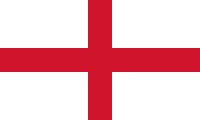 Gosport, Hampshire, United Kingdom
Gosport, Hampshire, United Kingdom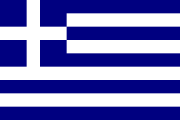 Nafplion (Ναύπλιο), Peloponnese, Greece
Nafplion (Ναύπλιο), Peloponnese, Greece
Famous monuments
Church of Notre-Dame (église Notre-Dame)
Built in three years by the architects Guillaume Gillet and Marc Hébrard, in association with the engineers Bernard Lafaille, René Sarger and Ou Tseng, the church Notre-Dame of Royan is considered as one of the leaders of work of the contemporary architecture.After the bombardments of January 5, 1945 which destroyed the former neogothic church which dated 1877, located at the current Square Charles de Gaulle, it was decided to build a building of bigger size and in the architecture so ambitious as spectacular, inspired by the aesthetics of the big Gothic cathedrals. Finished from 1958, it is completely built in raw concrete. The church was classified as historical monument in 1988. His dimensions are: a nave in ellipse, 45 metres long on 22 metres wide which can contain approximately 2000 persons, flanked by an ambulatory and by a stand situated in three metres of the ground. This stand is enlightened by stained glasses in the form of rhombus representing the Stations of the Cross. The structure of the building consists of an alternation of elements in reinforced concrete précontraints V (Lafaille system, of the name of the engineer Bernard Lafaille which created the process) alternating with immense covering windows 500 m2, work of the glassworker Henri Martin-Granel.
The Congress palace (Palais des congrès)
Built in 1957 by the architect of Bordeaux Claude Ferret. It is designed as a cubic geometry eased by the oblique movement of outside staircases and by the subtle interweaving of internal convex walls. Widely opened on the estuary of the Gironde by a glass wall, it was later enlarged with gardens, under a transparent cube. It was classified as a historical monument in 2004.
Central Market (Marché central)
Built in 1955 by the architects L. Simon and In. Morisseau and the engineer René Sarger. It is a round shell in a concrete eight centimeters thick. It rests on thirteen peripheral support points without any internal pillar. It is 52,40 metres in diameter, and its height in the center is 10,50 metres. It served as model for the conception of the market of Nanterre and as the CNIT of the Defence near Paris.
Park of the "Jardins du monde"
The Parc Jardins du Monde ( gardens of the world ) is vast all 7,5 hectares situated in border of the swamp of Pousseau, in the North of the city. Various ecosystems were reconstituted, the Japanese garden , inspired by the Buddhist and Shintoist traditions, ,or the Mediterranean park where cotoient lavender, palm trees and the other oleanders, around an impressive old olive tree of about 1800 years native of the region of Valencia, in Spain.
Sports
The main stadium of the city is the stadium of honor (stade d'honneur in french), situated near the railway station, Royan has numerous other sports facilities, including two swimming-pools of which one is an outdoor sea water pool opened in the summer, to Foncillon, several gymnasiums, a sports hall, several tennis courts, a pelota wall, a rugby ground and a golf course.
A surf-club is also based in the commune, near Pontaillac beach, as well as a karting circuit (KFM - Circuit of the côte de beauté).
A racecourse, a riding school and a 18 hole golf course, are in nearby La Palmyre, in the commune of Les Mathes.
Famous people born in Royan
Royan was the birthplace of:
- Pierre Dugua, Sieur de Monts, (ca 1558–1628), merchant, explorer and colonizer
- Eugène Pelletan (1813–84), writer, journalist and politician
- Jacques Fontaine III
- Auguste Rateau
- Etienne La Vigne (1638 - )
Famous people who visited Royan
- Pablo Picasso
- Leon Trotsky
- Émile Zola
- ([Stevie Woods)]
External links
- Official website (French)
- Tourist office website
- Royan information (French)
- vacation rentals all seasons Royannais Country
References
|
|||||